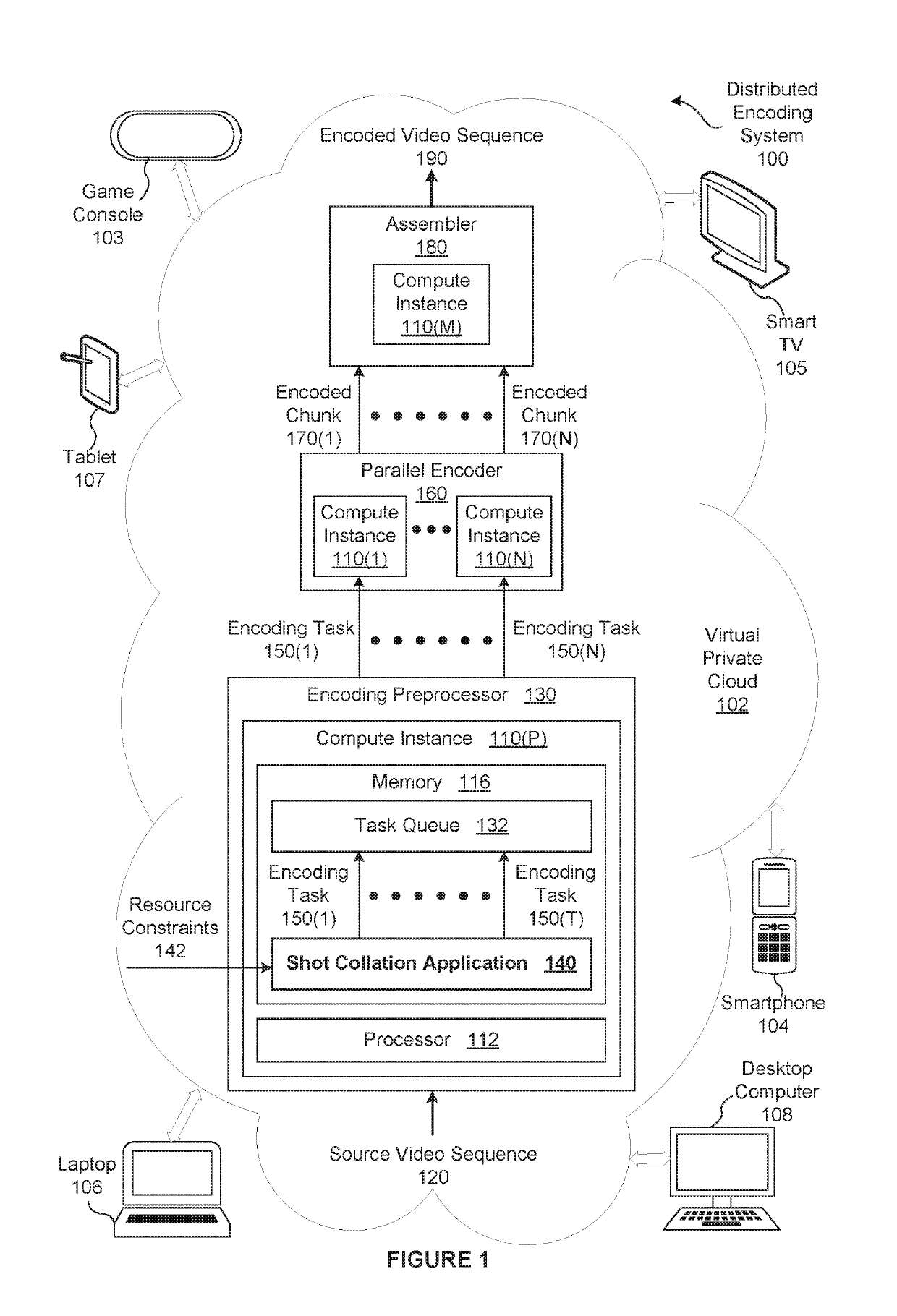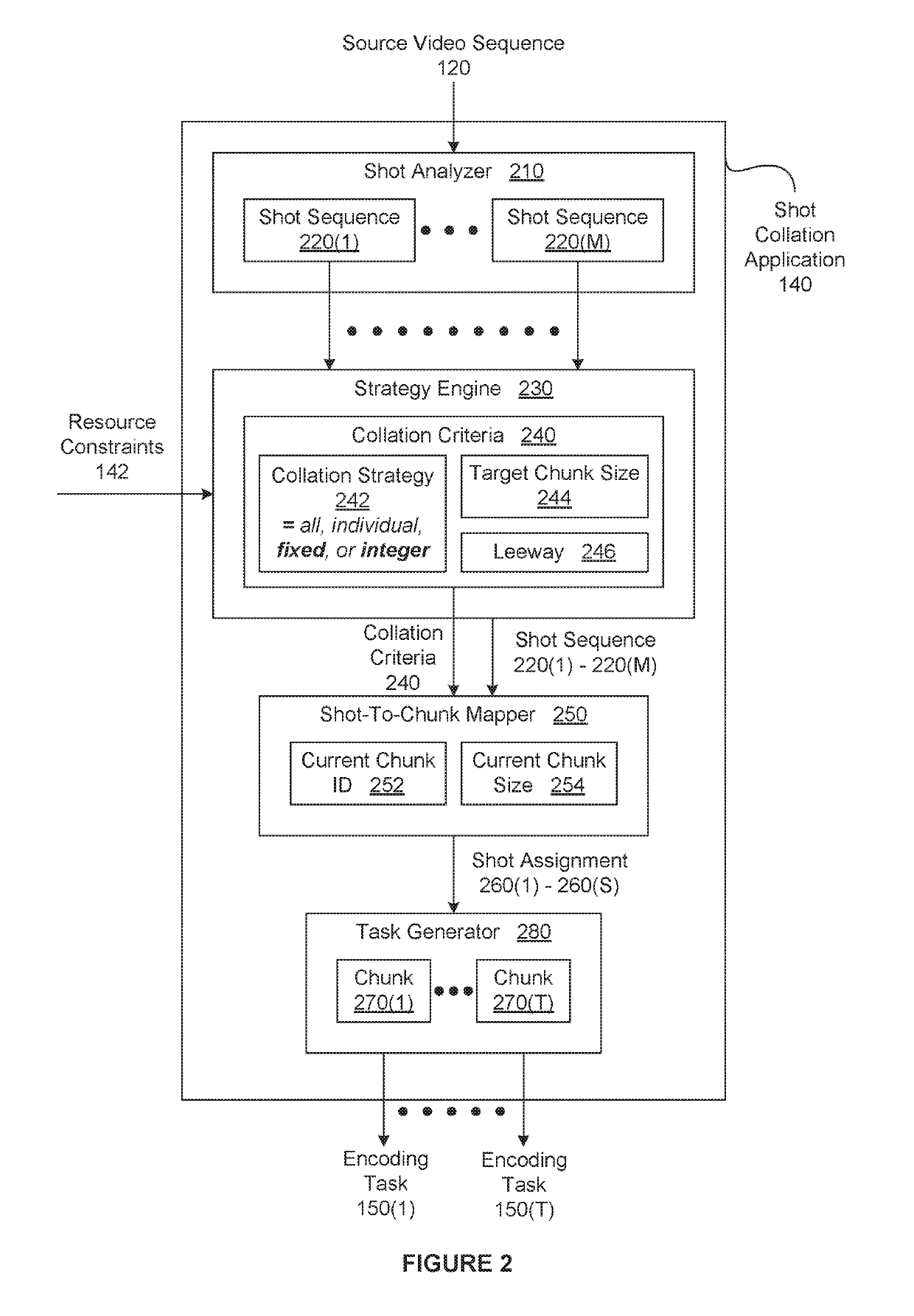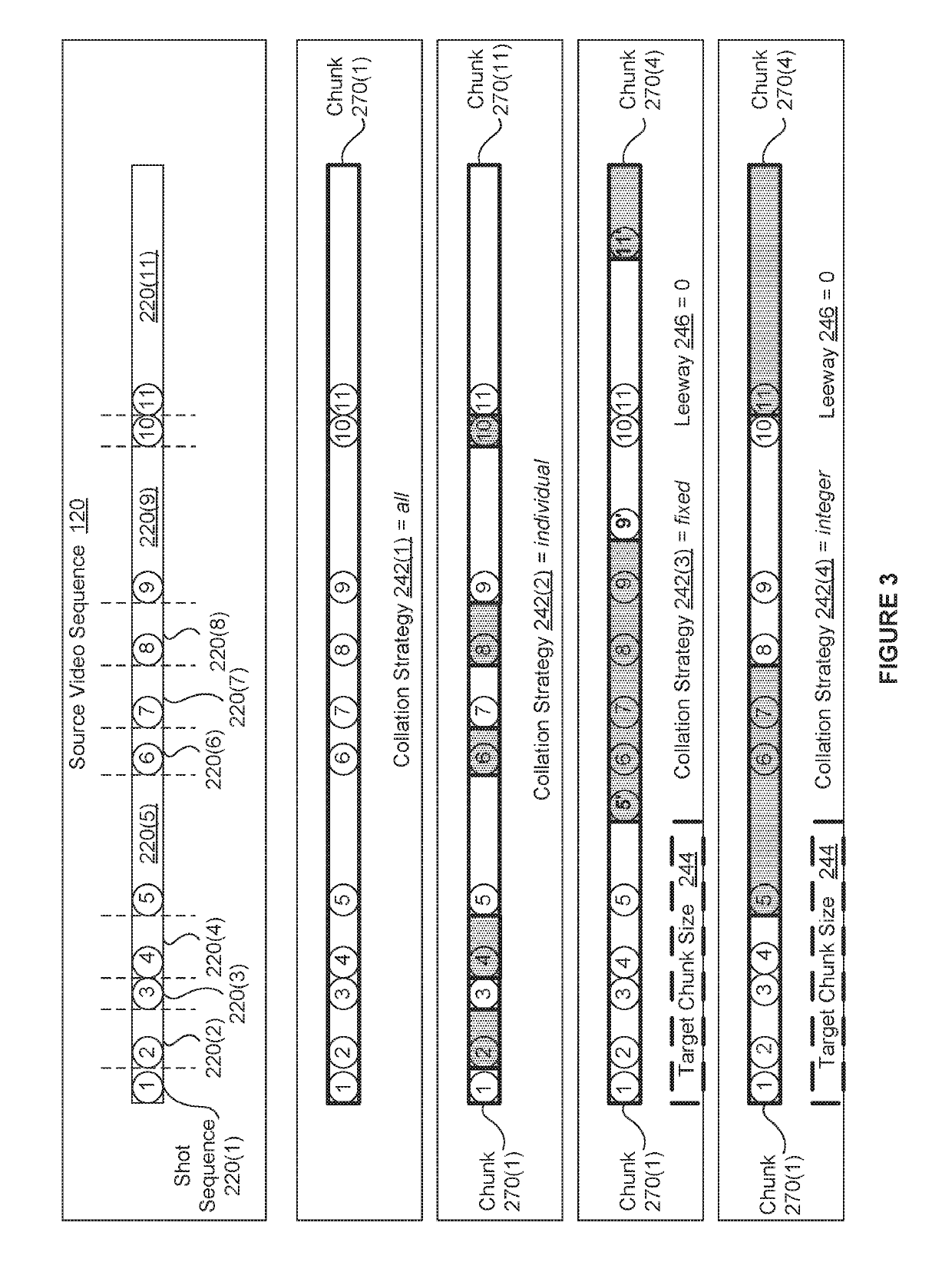Techniques for optimizing encoding tasks
a technology of encoding tasks and tasks, applied in the field of video technology, can solve the problems of reducing the overall performance of the centralized messaging subsystem and the shot-based distributed encoding system, the memory required to store undistributed encoding tasks may exceed the memory allocated to task queues, and the number of encoding tasks required to prepare source video sequences for real-time delivery can be undetectabl
- Summary
- Abstract
- Description
- Claims
- Application Information
AI Technical Summary
Benefits of technology
Problems solved by technology
Method used
Image
Examples
Embodiment Construction
[0014]In the following description, numerous specific details are set forth to provide a more thorough understanding of the present invention. However, it will be apparent to one of skilled in the art that the present invention may be practiced without one or more of these specific details.
[0015]The disclosed techniques may be used to efficiently encode source video sequences for real-time delivery. First, a shot analyzer partitions a source video sequence into shot sequences and transmits the shot sequences to a strategy engine. Upon receiving the shot sequences, the strategy engine evaluates characteristics of the shot sequences in conjunction with resource constraints to select collation criteria that guide the assignment of shots to chunks. For each shot sequence, a shot-to-chunk mapper assigns the shot sequence to a chunk based on the collation criteria. Notably, the shot-to-chunk mapper may assign multiple shot sequences to a single chunk.
[0016]As a task generator receives ind...
PUM
 Login to View More
Login to View More Abstract
Description
Claims
Application Information
 Login to View More
Login to View More - R&D
- Intellectual Property
- Life Sciences
- Materials
- Tech Scout
- Unparalleled Data Quality
- Higher Quality Content
- 60% Fewer Hallucinations
Browse by: Latest US Patents, China's latest patents, Technical Efficacy Thesaurus, Application Domain, Technology Topic, Popular Technical Reports.
© 2025 PatSnap. All rights reserved.Legal|Privacy policy|Modern Slavery Act Transparency Statement|Sitemap|About US| Contact US: help@patsnap.com



